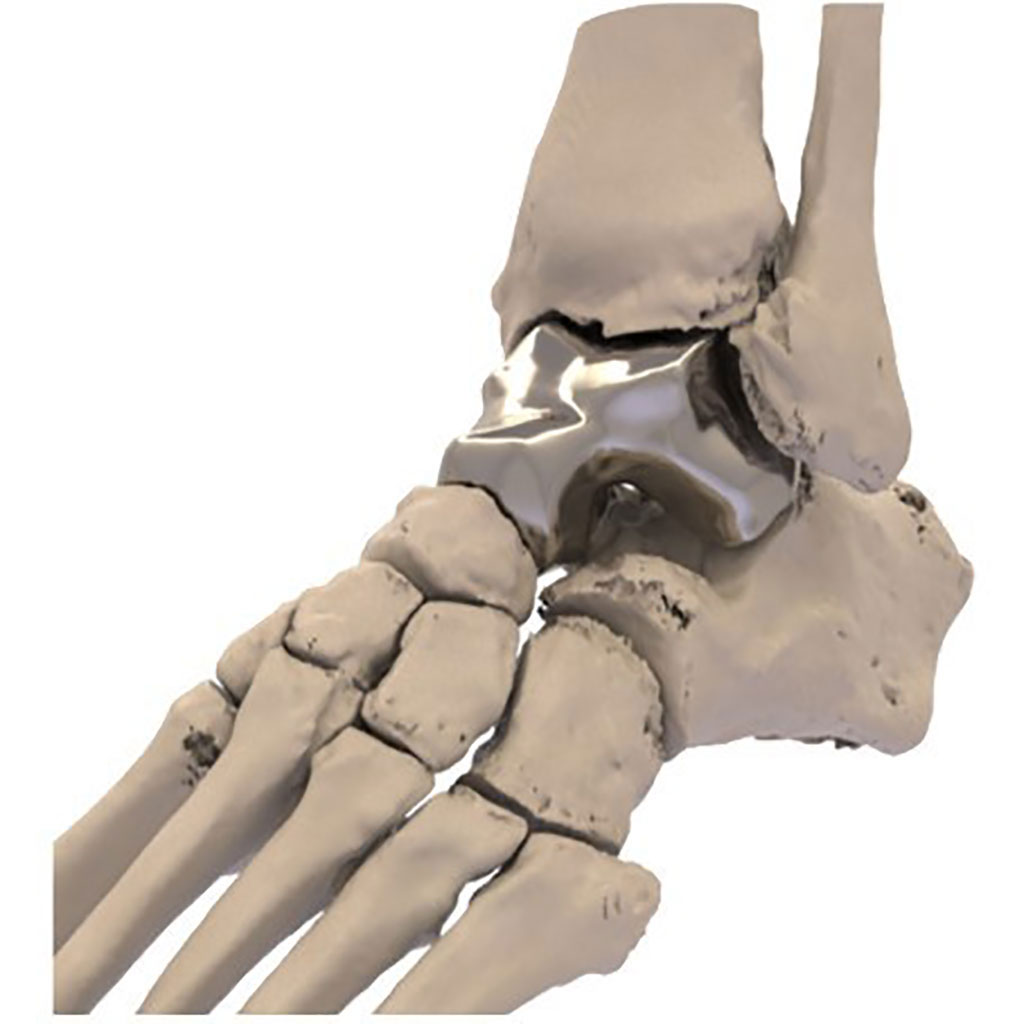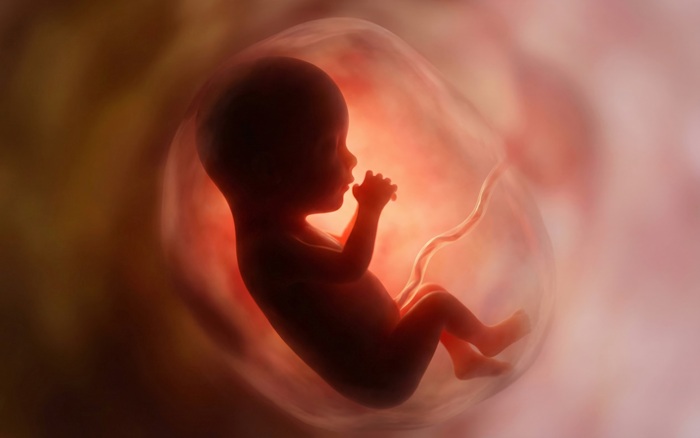Patient Specific Talus Spacer Treats Avascular Necrosis
|
By HospiMedica International staff writers Posted on 04 Mar 2021 |

Image: The 3D printed Patient Specific Talus Spacer (Photo courtesy of Additive Orthopaedics)
An additively manufactured patient specific implant allows patients suffering from avascular necrosis (AVN) to regain motion and reduce pain in the ankle.
The Additive Orthopaedics (Little Silver, NJ, USA) Patient Specific Talus Spacer is a three dimension (3D) printed implant that is designed to provide a joint-sparing alternative to other surgical interventions commonly used in late-stage AVN that may disable motion of the ankle joint. Constructed of a porous lattice structure in order to support bony in-growth, the advanced talus implant includes complex geometries that lead to enhanced osteointegration, which are not possible with traditional manufacturing processes.
The Patient Specific Talus Spacer is 3D printed for each patient individually, modeled from a computed tomography (CT) scan, and is fitted to the patient's specific anatomy. During the replacement surgery, the patient's talus bone is removed and replaced with the implant, which is made from cobalt chromium alloy. While fusion may become necessary in the future (should the condition worsen), the Additive Orthopaedics Talus Spacer provides a joint-sparing procedure, as it allows the patient to retain motion in the ankle joint.
“Avascular necrosis of the talus is extremely painful and debilitating for these patients. The Patient Specific Talus Spacer is another example of how 3D printed devices can improve the standard of care,” said Greg Kowalczyk, President of Additive Orthopaedics. “Surgical treatment options are below-the-knee amputation or joint fusion, which results in loss of motion of the ankle, and can have poor outcomes.”
AVN of the ankle joint is a serious and progressive condition that causes death of bone tissue stemming from a lack of blood supply to the area. It is often caused by a sudden injury--such as a broken bone or a dislocated joint--or sustained damage to the tissue that develops over time, causing the damaged bone to turn necrotic. When a joint is affected, such as the ankle, the cartilage also deteriorates, leading to arthritis and pain. Late-stage AVN of the ankle may result in the talus partially or fully collapsing.
Related Links:
Additive Orthopaedics
The Additive Orthopaedics (Little Silver, NJ, USA) Patient Specific Talus Spacer is a three dimension (3D) printed implant that is designed to provide a joint-sparing alternative to other surgical interventions commonly used in late-stage AVN that may disable motion of the ankle joint. Constructed of a porous lattice structure in order to support bony in-growth, the advanced talus implant includes complex geometries that lead to enhanced osteointegration, which are not possible with traditional manufacturing processes.
The Patient Specific Talus Spacer is 3D printed for each patient individually, modeled from a computed tomography (CT) scan, and is fitted to the patient's specific anatomy. During the replacement surgery, the patient's talus bone is removed and replaced with the implant, which is made from cobalt chromium alloy. While fusion may become necessary in the future (should the condition worsen), the Additive Orthopaedics Talus Spacer provides a joint-sparing procedure, as it allows the patient to retain motion in the ankle joint.
“Avascular necrosis of the talus is extremely painful and debilitating for these patients. The Patient Specific Talus Spacer is another example of how 3D printed devices can improve the standard of care,” said Greg Kowalczyk, President of Additive Orthopaedics. “Surgical treatment options are below-the-knee amputation or joint fusion, which results in loss of motion of the ankle, and can have poor outcomes.”
AVN of the ankle joint is a serious and progressive condition that causes death of bone tissue stemming from a lack of blood supply to the area. It is often caused by a sudden injury--such as a broken bone or a dislocated joint--or sustained damage to the tissue that develops over time, causing the damaged bone to turn necrotic. When a joint is affected, such as the ankle, the cartilage also deteriorates, leading to arthritis and pain. Late-stage AVN of the ankle may result in the talus partially or fully collapsing.
Related Links:
Additive Orthopaedics
Latest Surgical Techniques News
- Catheter-Based Procedures Offer Less Invasive Option for Treatment of Valvular Disease
- Laparoscopic Surgery Improves Outcomes for Severe Newborn Liver Disease
- Novel Endoscopy Technique Provides Access to Deep Lung Tumors
- New Study Findings Could Halve Number of Stent Procedures
- Breakthrough Surgical Device Redefines Hip Arthroscopy
- Automated System Enables Real-Time "Molecular Pathology" During Cancer Surgery
- Groundbreaking Procedure Combines New Treatments for Liver Tumors
- Ablation Reduces Stroke Risk Associated with Atrial Fibrillation
- Optical Tracking Method Identifies Target Areas in Robot-Assisted Neurosurgery
- General Anesthesia Improves Post-Surgery Outcomes for Acute Stroke Patients
- Drug-Coated Balloons Can Replace Stents Even in Larger Coronary Arteries
- Magnetic Kidney Stone Retrieval Device Outperforms Ureteroscopic Laser Lithotripsy
- Absorbable Skull Device Could Replace Traditional Metal Implants Used After Brain Surgery
- Magic Silicone Liquid Powered Robots Perform MIS in Narrow Cavities
- 'Lab-on-a-Scalpel' Provides Real-Time Surgical Insights for POC Diagnostics in OR
- Biodegradable Brain Implant Prevents Glioblastoma Recurrence
Channels
Critical Care
view channel
Bioadhesive Strategy Prevents Fibrosis Around Device Implants on Peripheral Nerves
Peripheral nerves connect the brain and spinal cord to muscles, organs, and sensory systems, making them key targets for treating neurological and systemic diseases. However, implantable bioelectronic... Read more
Miniature Non-Invasive Robotic Catheters to Improve Infertility Treatments
Minimally invasive procedures in reproductive and gynaecological medicine are often limited by the difficulty of navigating narrow, delicate anatomical pathways without damaging surrounding tissue.... Read morePatient Care
view channel
Revolutionary Automatic IV-Line Flushing Device to Enhance Infusion Care
More than 80% of in-hospital patients receive intravenous (IV) therapy. Every dose of IV medicine delivered in a small volume (<250 mL) infusion bag should be followed by subsequent flushing to ensure... Read more
VR Training Tool Combats Contamination of Portable Medical Equipment
Healthcare-associated infections (HAIs) impact one in every 31 patients, cause nearly 100,000 deaths each year, and cost USD 28.4 billion in direct medical expenses. Notably, up to 75% of these infections... Read more
Portable Biosensor Platform to Reduce Hospital-Acquired Infections
Approximately 4 million patients in the European Union acquire healthcare-associated infections (HAIs) or nosocomial infections each year, with around 37,000 deaths directly resulting from these infections,... Read moreFirst-Of-Its-Kind Portable Germicidal Light Technology Disinfects High-Touch Clinical Surfaces in Seconds
Reducing healthcare-acquired infections (HAIs) remains a pressing issue within global healthcare systems. In the United States alone, 1.7 million patients contract HAIs annually, leading to approximately... Read moreHealth IT
view channel
EMR-Based Tool Predicts Graft Failure After Kidney Transplant
Kidney transplantation offers patients with end-stage kidney disease longer survival and better quality of life than dialysis, yet graft failure remains a major challenge. Although a successful transplant... Read more
Printable Molecule-Selective Nanoparticles Enable Mass Production of Wearable Biosensors
The future of medicine is likely to focus on the personalization of healthcare—understanding exactly what an individual requires and delivering the appropriate combination of nutrients, metabolites, and... Read moreBusiness
view channel
Philips and Masimo Partner to Advance Patient Monitoring Measurement Technologies
Royal Philips (Amsterdam, Netherlands) and Masimo (Irvine, California, USA) have renewed their multi-year strategic collaboration, combining Philips’ expertise in patient monitoring with Masimo’s noninvasive... Read more
B. Braun Acquires Digital Microsurgery Company True Digital Surgery
The high-end microsurgery market in neurosurgery, spine, and ENT is undergoing a significant transformation. Traditional analog microscopes are giving way to digital exoscopes, which provide improved visualization,... Read more
CMEF 2025 to Promote Holistic and High-Quality Development of Medical and Health Industry
The 92nd China International Medical Equipment Fair (CMEF 2025) Autumn Exhibition is scheduled to be held from September 26 to 29 at the China Import and Export Fair Complex (Canton Fair Complex) in Guangzhou.... Read more














